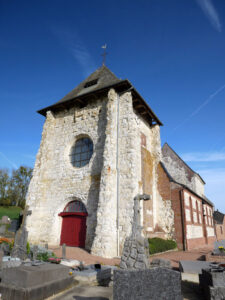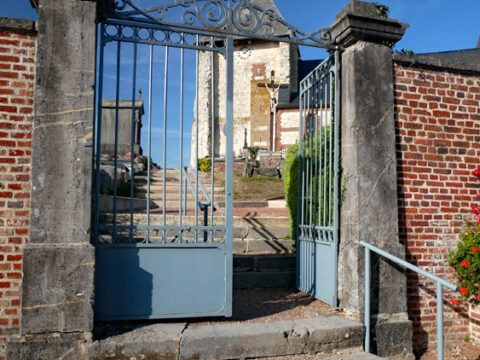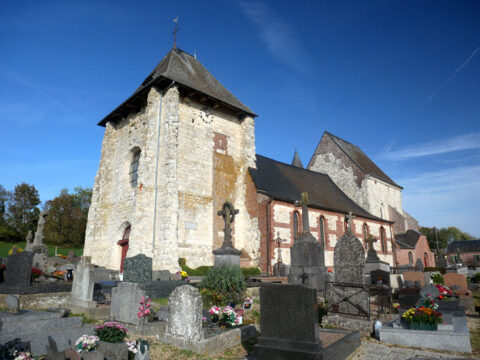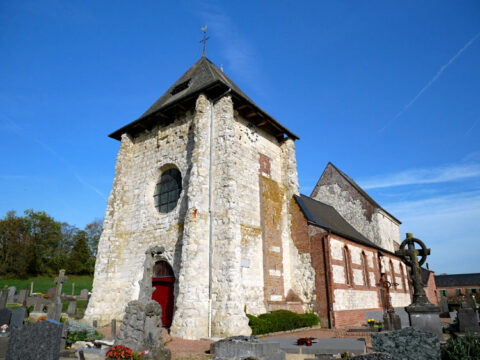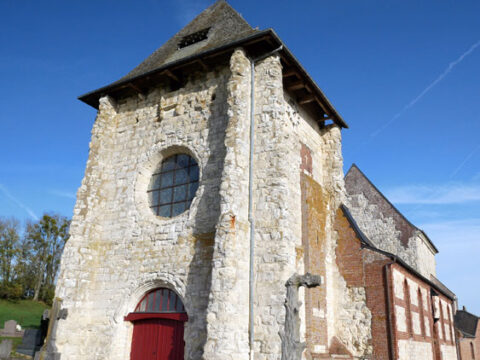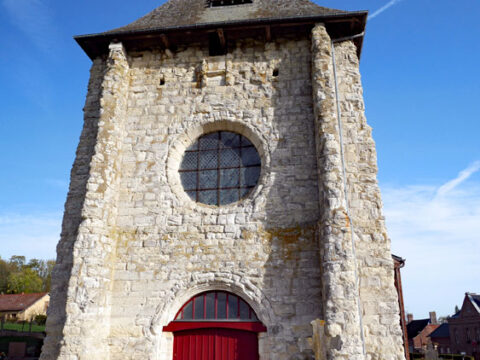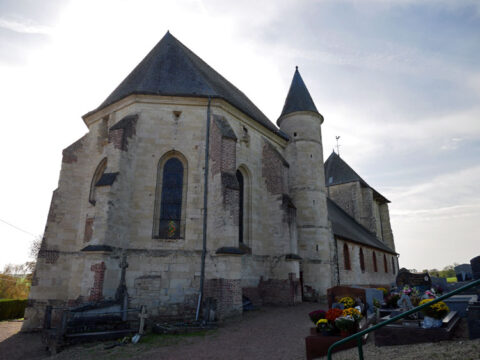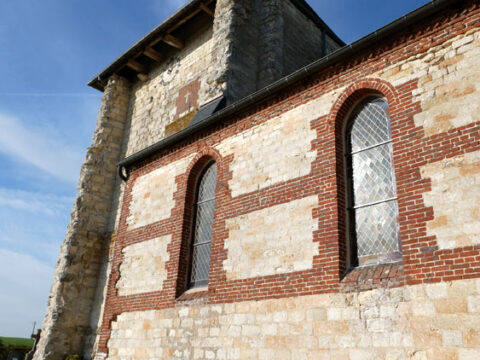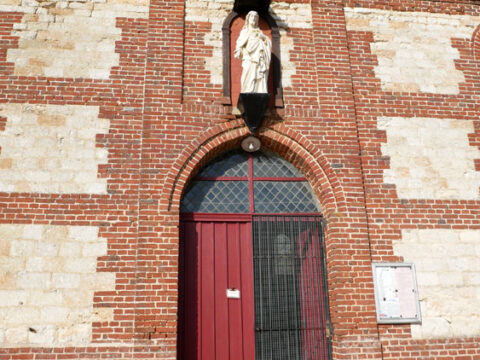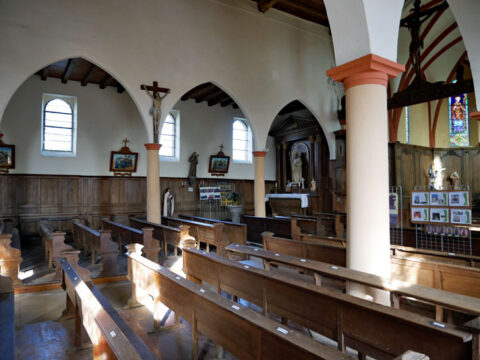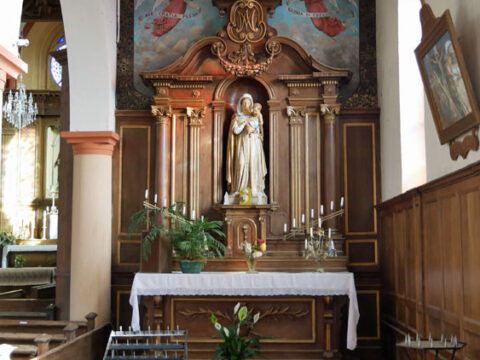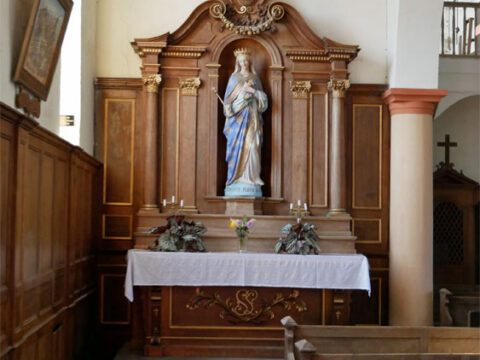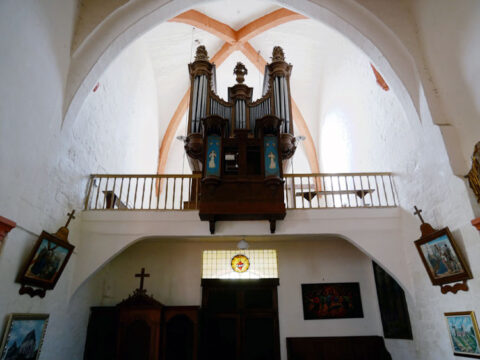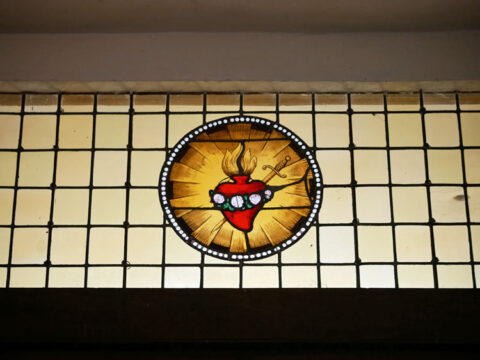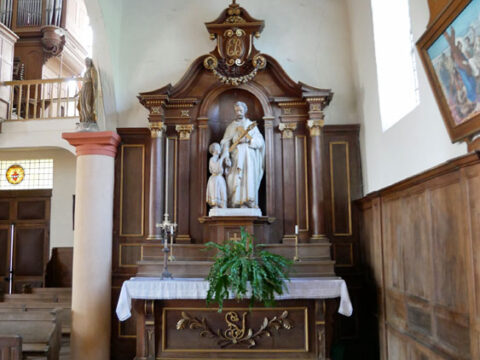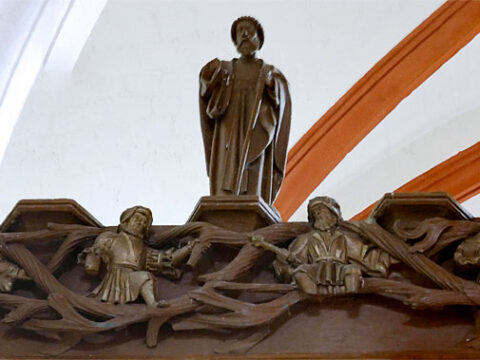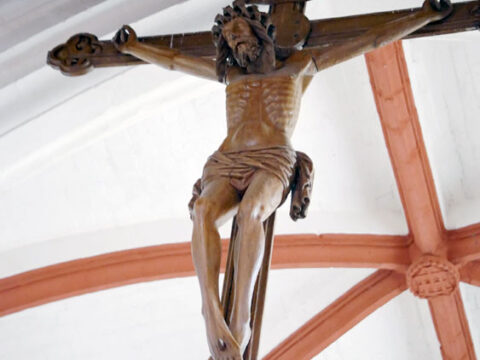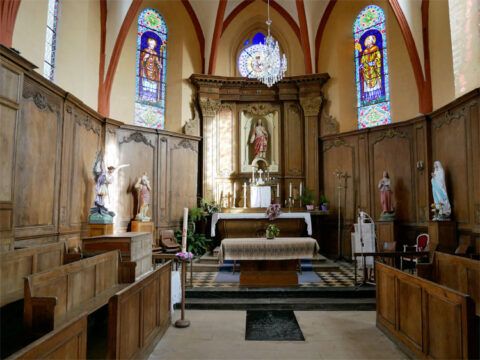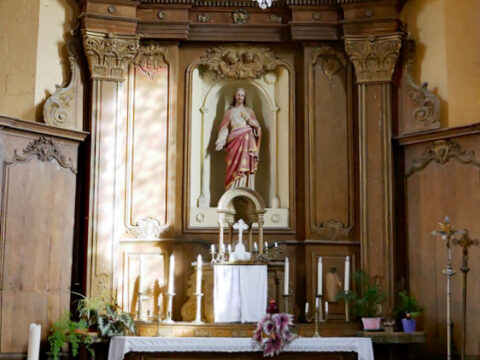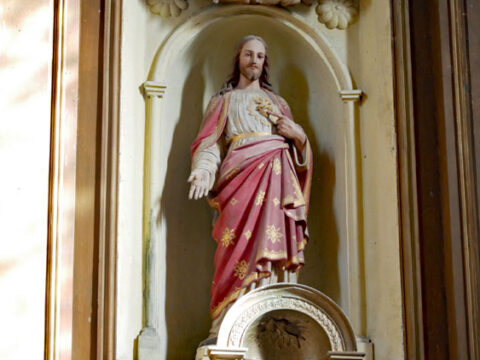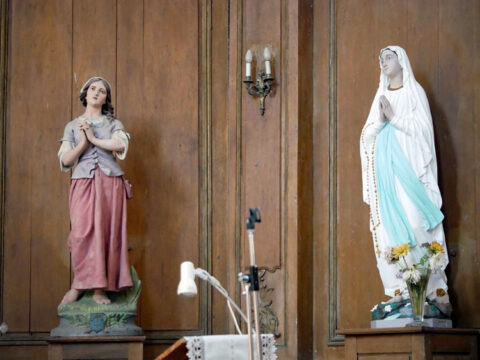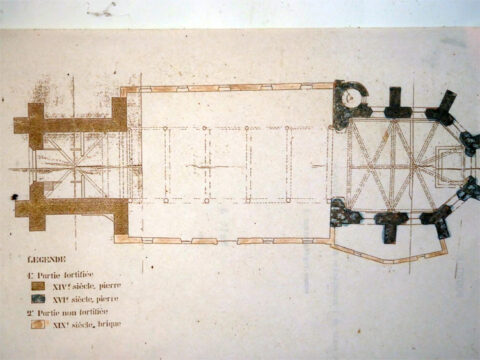Vigneux-Hocquet
Église Saint-Martin
Église Saint-Martin
Vigneux-Hocquet
Where to find this church
Church Information
Église Saint-Martin is located in Vigneux-Hocquet, a village with 272 inhabitants about 6 km north of Montcornet in the Département Aisne in the région Hauts-de-France.
The church is open from May to the beginning of October

This church was listed as a historical monument in 1987
* denotes external links that open in a new window

Visiting Église Saint-Martin
Saint-Martin in Vigneux-Hocquet is a very curious-looking church. It is located in the middle of the village in a slightly elevated position.
A ground plan displayed in the church illustrates the different construction phases of the three parts: the oldest fortified part is the two-storey keep of white limestone in the west with embrasures and a remnant of a cofferdam tower built in the 14th century. On the first floor is the first refuge room, which is reached via the ceiling of the nave.
At the other end of the church is a second refuge room above the choir, fortified with thick brick buttresses, probably around 1543 by a certain Hérissart, according to an inscription between the choir and the nave. This second room of refuge was reached via the external staircase in the cylindrical tower located on the north side at the junction between the nave and the choir. This room is lined with embrasures and a machicolation.
Finally, between the five-sided choir and the similarly high keep, there is a long but much lower nave, which forms the third part of the church. It was rebuilt in the 19th century in the modern style, after having fallen victim to a fire in the 16th century, and was initially only makeshiftly rebuilt. Unfortunately, no care was taken to ensure that it was stylistically halfway harmonious with the overall complex.
Inside, a Tree of Jesse in the form of a wooden glory beam between the nave and the choir, which has a ribbed vault from the 16th century, is particularly worth seeing and rare. On a keystone of the vault is a coat of arms that appears to represent six sheaves.
